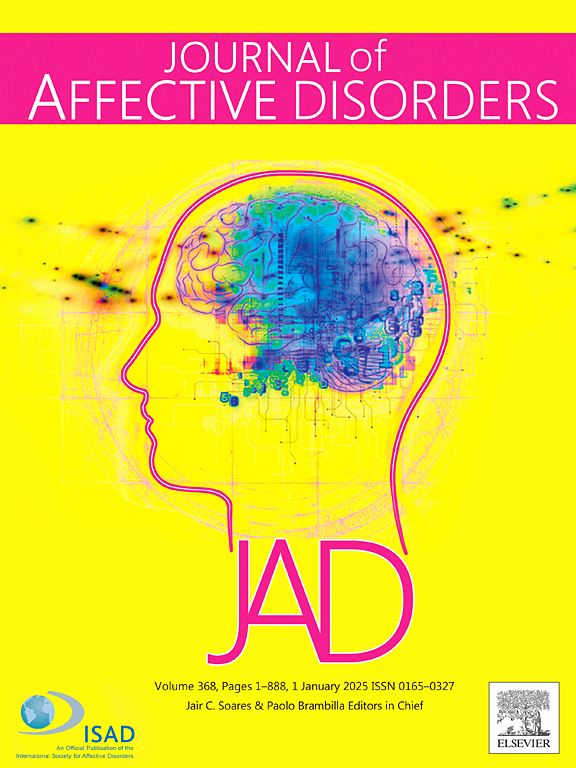Peripheral protein inflammatory biomarkers in bipolar disorder and major depressive disorder: A systematic review and meta-analysis
IF 4.9
2区 医学
Q1 CLINICAL NEUROLOGY
引用次数: 0
Abstract
Objectives
Bipolar disorder (BD) and major depressive disorder (MDD) are mood disorders. The most frequent clinical presentation of BD and MDD is depression, which contributes to high rates of misdiagnosis between disorders. To support diagnostic discrimination and therapeutic stratification, we aim to perform a systematic review and meta-analysis evaluating peripheral protein inflammatory biomarkers between BD and MDD, with a focus on the depressive state.
Methods
We conducted a literature search on PubMed, PsycInfo and Embase with no year/language restrictions. Original studies including human participants with a BD or MDD diagnosis which directly compared levels of peripheral protein inflammatory biomarkers between groups were included. A random effects meta-analysis was performed.
Results
35 studies were included in the systematic review. 9 studies were included in the meta-analysis. The meta-analysis showed IL-7 (p < 0.01) levels were significantly decreased in BD, and IL-9 (p < 0.01), CCL3 (p = 0.03), CCL4 (p = 0.01), CCL5 (p = 0.02) and CCL11 (p = 0.04) levels were significantly increased in BD.
Limitations
High heterogeneity and limited dataset size restricted our meta-analysis to a small subset of biomarkers and limited our exploration of the effects of moderator variables.
Conclusion
This study found differences in IL-7, IL-9, CCL3, CCL4, CCL5 and CCL11 between BD and MDD in a depressive state. These findings support the notion that inflammation is associated with mood disorder pathophysiology, particularly with respect to T-cell network dysregulation. Further studies can assist in better understanding differences between disorders and work towards clinical applications.
求助全文
约1分钟内获得全文
求助全文
来源期刊

Journal of affective disorders
医学-精神病学
CiteScore
10.90
自引率
6.10%
发文量
1319
审稿时长
9.3 weeks
期刊介绍:
The Journal of Affective Disorders publishes papers concerned with affective disorders in the widest sense: depression, mania, mood spectrum, emotions and personality, anxiety and stress. It is interdisciplinary and aims to bring together different approaches for a diverse readership. Top quality papers will be accepted dealing with any aspect of affective disorders, including neuroimaging, cognitive neurosciences, genetics, molecular biology, experimental and clinical neurosciences, pharmacology, neuroimmunoendocrinology, intervention and treatment trials.
 求助内容:
求助内容: 应助结果提醒方式:
应助结果提醒方式:


